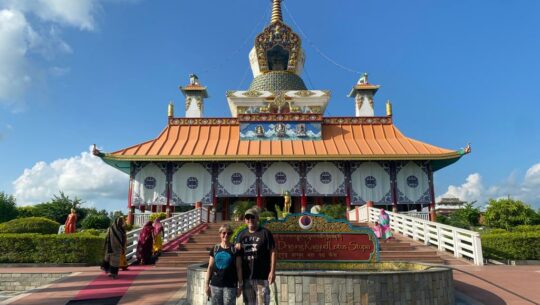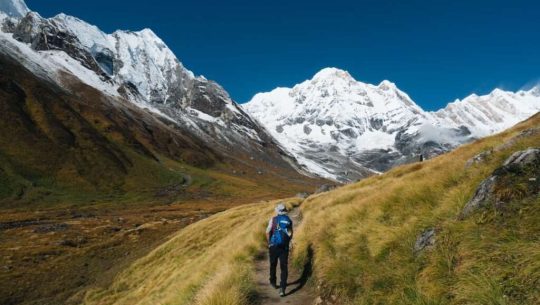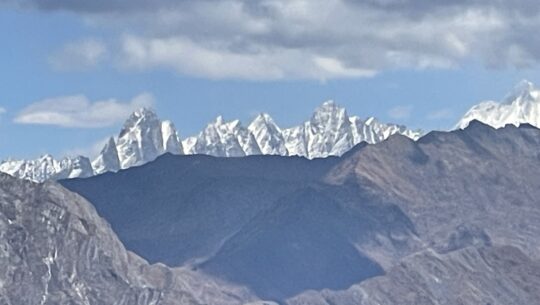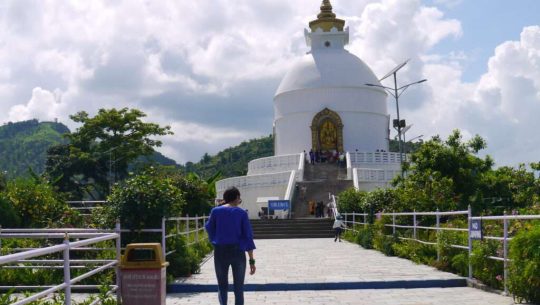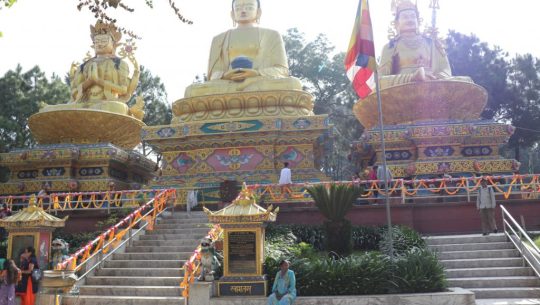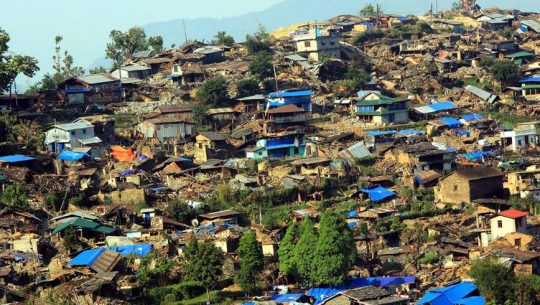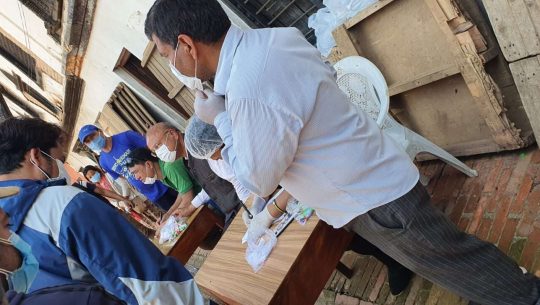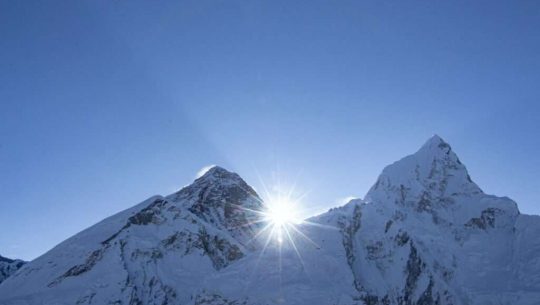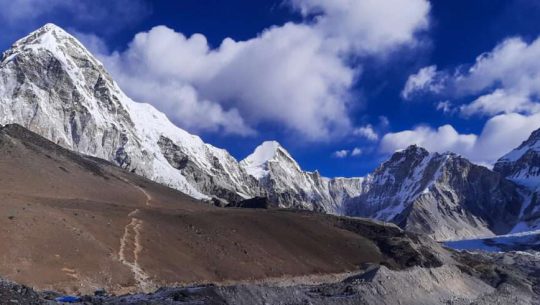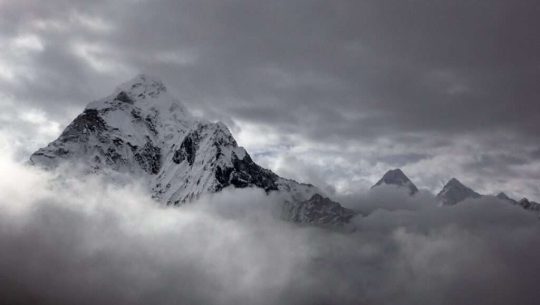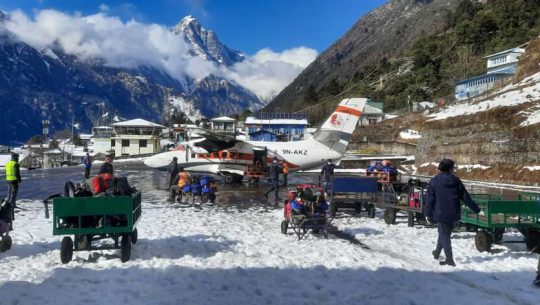Manaslu Tsum Valley Trek – 19 Days
USD 1800
15-21days
Challenging
5106m(Larkey La Pass)
Hotel/Lodge/Tea House
Public Bus
Minimum 2 person
Spring and Autumn
Manaslu Tsum Valley Trek – 19 Days Brief Insight
The Manaslu Tsum Valley Trek – 19 Days presents an alluring and fulfilling trekking opportunity set in the distant corners of Nepal. This adventure combines the striking charm of the Manaslu area with the distinct cultural and natural wonders of Tsum Valley. The journey offers a mix of stunning panoramas, diverse plant and animal life, and engagements with local societies.
The Manaslu region is celebrated for its breathtaking mountain views. Towering Mount Manaslu at 8,163 meters (26,781 feet) is the central attraction. The path guides trekkers through verdant forests, stepped fields, peaceful villages, and elevated mountain passes. The challenging terrain and limited development in the area make it an ideal choice for adventurers seeking to explore.
A major highlight of the trek is the Tsum Valley, often dubbed the “Hidden Valley of Happiness.” The Tsum Valley is famous for its deep-rooted Buddhist culture and traditions. Thus, travelers can explore ancient monasteries, chortens, and secluded villages that have safeguarded their way of life for generations. The warm hospitality of the local inhabitants adds a special dimension to the journey.

The trek usually commences in Arughat and follows the course of the Budi Gandaki River, traversing various landscapes and crossing multiple suspension bridges. As the ascent progresses, the scenery transitions from subtropical woodlands to alpine meadows and eventually to high-altitude desert terrains. The challenging yet stunning Larkya La Pass stands at 5,160 meters (16,930 feet). It is a notable point on the route, providing sweeping views of the nearby mountains.
Similarly, it’s important to bear in mind that the Manaslu and Tsum Valley Trek require a special permit. This is due to its restricted nature, which aims to preserve the local environment and culture. Travelers are advised to plan ahead, arrange for authorized guides, and adhere to responsible trekking practices to ensure a secure and respectful journey.
In summary, the Manaslu and Tsum Valley Trek offers a remarkable venture that presents a blend of natural beauty, cultural immersion, and a sense of seclusion that is becoming increasingly rare today. Those who embark on this expedition are treated to awe-inspiring landscapes and develop a deep admiration for the resilience and warmth of the local communities that inhabit this region.
Our service for our guest
Multi-day Tour
Yoga Tour in Nepal Brief Insight
Yoga physical is a mental and spiritual practice or discipline which originated in ancient Nepal. Yoga is one of the six Astika (orthodox) schools of Hindu philosophical traditions. Yoga Tour in Nepal is a great experience in the Himalayas.
Outline Itinerary
- Day 1: Arrive in Kathmandu or your Destination
- Day 2: Visit Buddhanilkanth, Kapan and Bauddha Nath
- Day 3: Visit Namobuddha, Panauti and Bhaktapur
- Day 4: Visit Chovar, Pharping, Kirtipur and Swyambhu
- Day 5: Drive from Kathmandu to Pokhara and explore
- Day 6: Explore Pokhara then Drive from Pokhara to Kade and hike to Australian Camp
- Day 7: Trek from the Australian camp to Sarankot via Kaski Kot
- Day 8: Sarankot to Pokhara then back to Kathmandu
- Day 9: Final departure
Everest Region
Please go to our Plan Trip or Customize Trip according to your time duration and schedule.
Therefore, Robinson Crusoe Holiday is always ready to provide excellent services for our guests. Based on our cultural motto “Matri Debo Bhaba, Pitrii Debo Bhaba, Atithi Debo Bhaba.” Thus, the Mother is a God, the Father is a God, and the Guest is a God.
Highlights of Manaslu Tsum Valley Trek – 19 Days
- Experience varied landscapes, from lush forests to alpine meadows and pristine rivers.
- Cultural Encounter: Immerse in Buddhist culture, visiting monasteries, nunneries, and interacting with locals.
- Trek in less-traveled trails, away from tourist crowds, in the serene Manaslu region.
- Enjoy panoramic vistas of peaks like Manaslu and Ganesh Himal.
- Conquer the challenging pass at 5,106 meters(Larkya La Pass), relishing stunning views.
- Discover the hidden “Little Tibet”(Tsum Valley) with ancient monasteries and spiritual ambiance.
- Hike to the Ganesh Himal Base Camp, witnessing the Himalayan giants up close.
- Explore charming and traditional villages like Chumling, Chhaikampar, and Samagaun.
- Tea House Experience: Stay in local tea houses, savoring Nepali hospitality and cuisine.
- Unique Side visits like Milarepa cave, adding spirituality and adventure.
Outline Itinerary
- Day 1 : Drive from Kathmandu to Machhi Khola(890 m) via Arughat (570 m)
- Day 2 : Trek from Machhi Khola (890m) to Jagat (1350m.).
- Day 3 : Trek from Jagat to Lokpa
- Day 4 : Trek from Lokpa to Chumling
- Day 5 : Trek from Chumling to Chhokang Paro.
- Day 6 : Trek from Chhokang Paro to Chhule.
- Day 7 : Trek from Chhule/Nile to Mu Gumpa
- Day 8 : Trek back from Mu Gumpa to Chhokang Paro.
- Day 9 : Trek from Chhokang Paro to Chumling.
- Day 10 : Trek from Chumling to Deng.
- Day 11 : Trek from Deng to Namrung
- Day 12 : Trek from Namrung to Samagaon.
- Day 13 : Acclimatization day at Samagaon
- Day 14 : Trek from Samagaon to Samdo
- Day 15 : Trek from Samdo to Dharmasala
- Day 16 : Trek from Dharmasala to Bhimtang
- Day 16 : Trek from Dharmasala to Bhimtang
- Day 18 : Trek back to Besisahar from Dharapani
- Day 19 : Drive to Kathmandu from Besisahar
Detailed Itinerary
Day 1 : Drive from Kathmandu to Machhi Khola(890 m) via Arughat (570 m)
Day 2 : Trek from Machhi Khola (890m) to Jagat (1350m.).
Day 3 : Trek from Jagat to Lokpa
Day 4 : Trek from Lokpa to Chumling
Day 5 : Trek from Chumling to Chhokang Paro.
Day 6 : Trek from Chhokang Paro to Chhule.
Day 7 : Trek from Chhule/Nile to Mu Gumpa
Day 8 : Trek back from Mu Gumpa to Chhokang Paro.
Day 9 : Trek from Chhokang Paro to Chumling.
Day 10 : Trek from Chumling to Deng.
Day 11 : Trek from Deng to Namrung
Day 12 : Trek from Namrung to Samagaon.
Day 13 : Acclimatization day at Samagaon
Day 14 : Trek from Samagaon to Samdo
Day 15 : Trek from Samdo to Dharmasala
Day 16 : Trek from Dharmasala to Bhimtang
Day 16 : Trek from Dharmasala to Bhimtang
Day 18 : Trek back to Besisahar from Dharapani
Day 19 : Drive to Kathmandu from Besisahar
What is included in Manaslu Tsum Valley Trek – 19 Days
- Trekkers’ information management system. (Tims Card)
- Manasalu Conservation Area Project. (MCAP Permit)
- You’re Meal in During the Trekking as Your standard meals (3 times a day Breakfast, Lunch, and Dinner).
- All Trekking Permit (Manasalu Conservation Area) and Local Permit.
- Accommodation in Trekking: All accommodations in lodge/tea houses during the treks.
- Trekking Guide: An experienced, helpful, friendly, and English speaking Trekking Guide. His well- paid salary, meals, accommodation insurance, etc.
- Trekking Porter: porters (1 porter for 2 peoples). Salary, Food, Drinks, Accommodation, Transportation.
- After the Success Trip, Provide Adventure Certificate.
- Arrangement of Emergency Helicopter service which will be paid by your Travel insurance company.
- Medical supplies (first aid kit will be available).
- All government taxes.
- Service charge.
What is Excluded
- Meals and Extra Accommodation in Kathmandu
- All Hot and Cold drinks
- Single Trekker & Solo Trekker (Porters Extra Charge)
- Special Table Menu/Bakery Cafe
- The additional size of Pots Hot Drinks
- Electronic device re-charge
- Hot shower
- On the trekking Wi-Fi
- Personal expenses any type
- Travel insurance and evacuation insurance
- Tipping for Guide and Porter
Trip Map
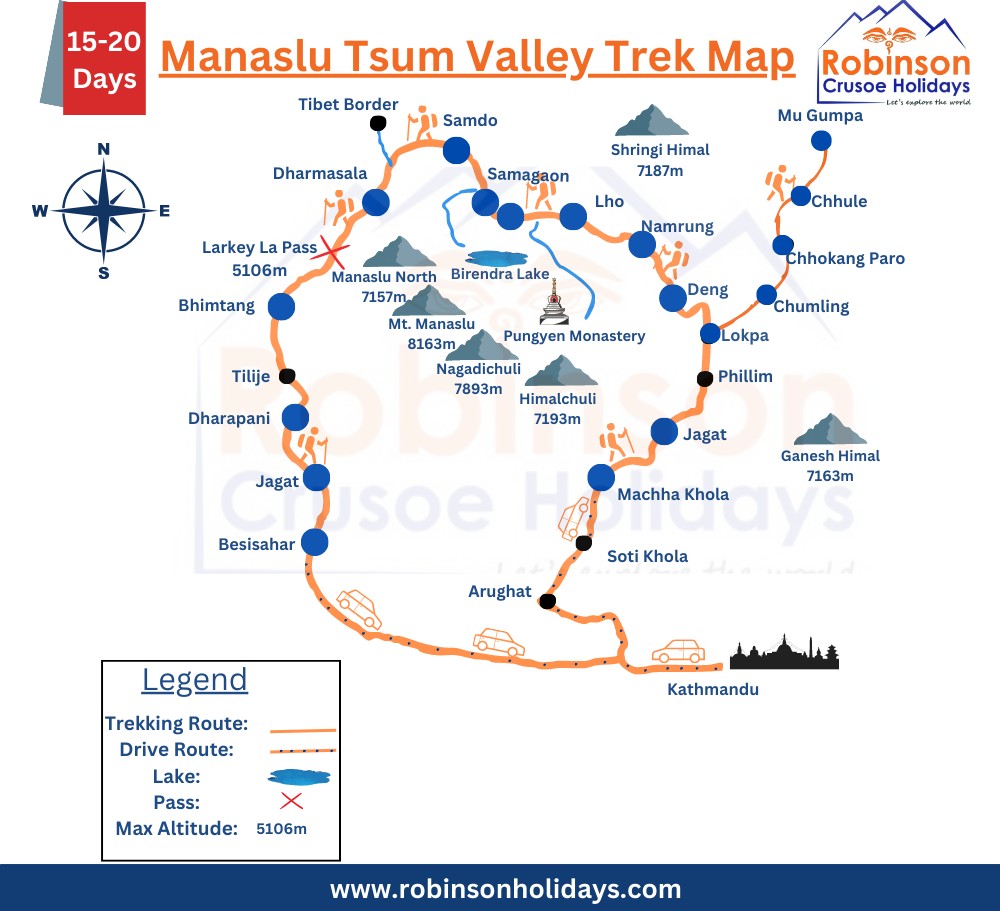
Additional information
Trekking in the Tsum Valley and Manaslu Circuit trek offers a remarkable journey that satisfies both scenic and cultural desires for trekkers. This route, less crowded compared to other trails, presents a serene experience. The region boasts breathtaking mountain views, and numerous waterfalls along the Budhi Gandaki River. And the unique Buddhist culture of Tsum Valley with its monasteries and chortens. Reaching Larkya La Pass brings a sense of accomplishment.
The trek allows for various side trips, including visits to Gompa Lungdang, Ganesh Himal Base Camp, Kal Tal, the Tibetan border, Pungen Gompa, and Manaslu Base Camp. It’s a blend of unparalleled cultural immersion with the vibrant Buddhist heritage of Tsum Valley. And exceptional wilderness exploration, highlighted by the majestic Manaslu Peak. This combination makes it an incredibly fulfilling experience, showcasing Nepal’s best.
Moreover on Tsum Valley Trek
The Manaslu Tsum Valley Trek offers a truly unique cultural encounter, with Buddhist monasteries, prayer wheels, and the spiritual aura of the inhabitants. The landscape features meadows, terraced fields, and the grandeur of Ganesh Himal. Growing in popularity, this trek provides diverse landscapes, from semi-tropical to alpine, thrilling trails across suspension bridges, and awe-inspiring mountain scenery. The journey is complemented by encounters with mule and yak teams, wildlife, and the resilient local people.
Similarly, Starting alongside the Budhi Gandaki River, the trail crosses suspension bridges, revealing views of Ganesh Himal and Siringi Himal. Beyond Chhokoang Paro, the scenery shifts to the alpine and introduces the rich Tibetan culture of the valley, with monasteries exuding spirituality. Returning through the valley, trekkers can explore Ganesh Himal Base Camp before heading back to the Budhi Gandaki.
In essence, the Tsum Valley and Manaslu Circuit Trek deliver a captivating blend of cultural and natural wonders, making it an exceptional adventure in Nepal’s Himalayas.
Manaslu Circuit Tsum Valley Trek Difficulties
Starting on the extraordinary journey that combines the Manaslu Circuit with the Tsum Valley trek opens the door to a world of adventure, yet it’s wise to anticipate the distinctive challenges that may cross your path. Here’s a bespoke insight into the potential difficulties of this trek:
Elevation Expedition: The allure of this trek lies in its soaring altitudes, with stretches surpassing the 5,000-meter mark. However, these heights also usher in the possibility of altitude sickness, unveiling symptoms like the unwelcome company of headaches, nausea, and fatigue, along with more ominous companions like High Altitude Pulmonary Edema (HAPE) and High Altitude Cerebral Edema (HACE).
Remote Realities: While the allure of remoteness lends charm to the trek, it also unveils a scarcity of modern conveniences. Basic facilities and accommodations punctuate the journey, serving as a gentle reminder of the rugged terrains you traverse.
Footprints Across Rough Terrains: Prepare to etch your footprints across rocky landscapes and grapple with challenging terrains. The journey entails steep ascents and descents, testing your mettle in the process.
The Dance of the Elements: Nature’s whimsical dance of changing weather patterns adds an element of unpredictability. Prepare to bask in the sun’s warmth one moment, only to be shrouded by sudden rain or snowfall the next. The biting cold at higher altitudes heightens the stakes.
Permits and Puzzles: Navigating the bureaucratic labyrinth of permits and regulations can be likened to solving a puzzle. This trek mandates special permits, necessitating an engagement with registered trekking agencies. Your patience will be tested.
Cultural Courtesies: The Tsum Valley unfolds its cultural tapestry steeped in Tibetan Buddhism. Tread gently and respectfully through these spiritual customs, as you’re an observer in this vibrant cultural symphony.
Endurance Elevation: The journey’s rhythm calls for a good measure of physical endurance. The blend of long walking days, steep inclines, and thinning air requires your body to embrace this heightened challenge.
Solitude’s Embrace: If you seek solace in isolation, the trek’s uncrowded paths will resonate with you. Yet, if the company of fellow trekkers is your lifeline, be prepared for encounters that are fewer and farther between.
Digital Detour: Bid adieu to regular internet connectivity and cell phone service. These digital luxuries wane in these remote terrains, encouraging you to relish the unfiltered moments.
The Gear Equation: Deciphering the code of appropriate gear is imperative. Insufficient clothing and equipment can amplify the difficulties, making prudent gear selection an art form.
Trail Tales: The trail itself weaves tales of diversity, from well-trodden paths to less-defined trails. Your adaptability will be tested with each shift in trail conditions.
While these challenges may cast their shadows, they ultimately spotlight the uniqueness of this trek. Adequate preparation, encompassing physical readiness, thorough research, and an understanding of local customs, can shape this into a once-in-a-lifetime experience. Relying on experienced guides or trekking agencies can be your compass, guiding you through these challenges while ensuring your safety and enriching your expedition.
Best Months for The Manaslu Tsum Valley Trek
Autumn (September to November): Fall stands out as the optimal time for the Manaslu-Tsum Valley Trek. During this season, the weather remains consistent and clear, granting splendid views of the landscapes. The temperatures are mild across different altitudes, making the trek comfortable. Well-marked trails and the transformation of foliage into autumn shades add to the charm. Moreover, local festivities enrich the cultural experience during this period.
Spring (March to May): Another favorable time for the trek is spring. The weather gradually warms up, melting winter snow and opening up the trails. The emergence of colorful rhododendrons and other wildflowers infuses the environment with vibrant hues, enhancing the visual aspect of the journey. Spring also signals the rejuvenation of local plants and animals, offering a chance to witness nature’s awakening.
Both autumn and spring offer predictable weather and agreeable temperatures, ensuring an enjoyable trekking adventure. However, it’s advisable to verify the current weather conditions and trekking guidelines before commencing the journey, as these aspects can vary slightly from year to year.
Manaslu Tsum Valley Trek Permit
Participating in the Manaslu Tsum Valley Trek mandates obtaining specific permits due to the trek’s distinctive location and cultural significance. There are two primary permits that trekkers must secure:
Restricted Area Permit (RAP): To access the Manaslu Conservation Area, encompassing the Manaslu region, a mandatory permit is required. This region is classified as restricted to managing and conserve its natural and cultural assets. The permit acquisition process involves authorized trekking agencies, and being part of a registered trekking group is a prerequisite.
Tsum Valley Special Permit: Given the trek’s passage through the culturally rich Tsum Valley, a dedicated permit is essential for exploring this zone. Like the RAP, the Tsum Valley Special Permit can be acquired through authorized trekking agencies, and trekking with a registered group is obligatory.
Both permits are vigilantly monitored to uphold environmental integrity and local heritage, while also contributing to local community growth. Throughout the trek, you should carry and present these permits at designated checkpoints.
It’s worth noting that permit regulations and costs are subject to change, so it’s recommended to verify details with authorized trekking agencies or official sources before commencing the journey. Adhering to these permit requisites not only streamlines the trekking experience but also aids in safeguarding the region’s exceptional natural beauty and cultural heritage.
Transportation for Manaslu Tsum Valley Trek
Transportation logistics play a pivotal role in orchestrating the Manaslu Tsum Valley Trek, considering the trek’s distinctive location and remote setting. Commencing from Kathmandu, the capital of Nepal, the journey kicks off by embarking on a road trip to Machhi Khola, the trek’s starting point. Typically spanning 7 to 10 hours, the road journey involves private jeeps or local buses, adapting to road conditions and traffic patterns. This initial leg of the voyage sets the stage for the trek ahead.
Once at the trailhead, the mode of transport transitions to the trekking trail itself. The diverse landscapes, suspension bridge crossings, and encounters with local villages become the pathways as you navigate on foot. The return journey follows a different route crossing the Larkey La Pass reaching the Besisahar, and driving back to Kathmandu or Pokhara from there.

